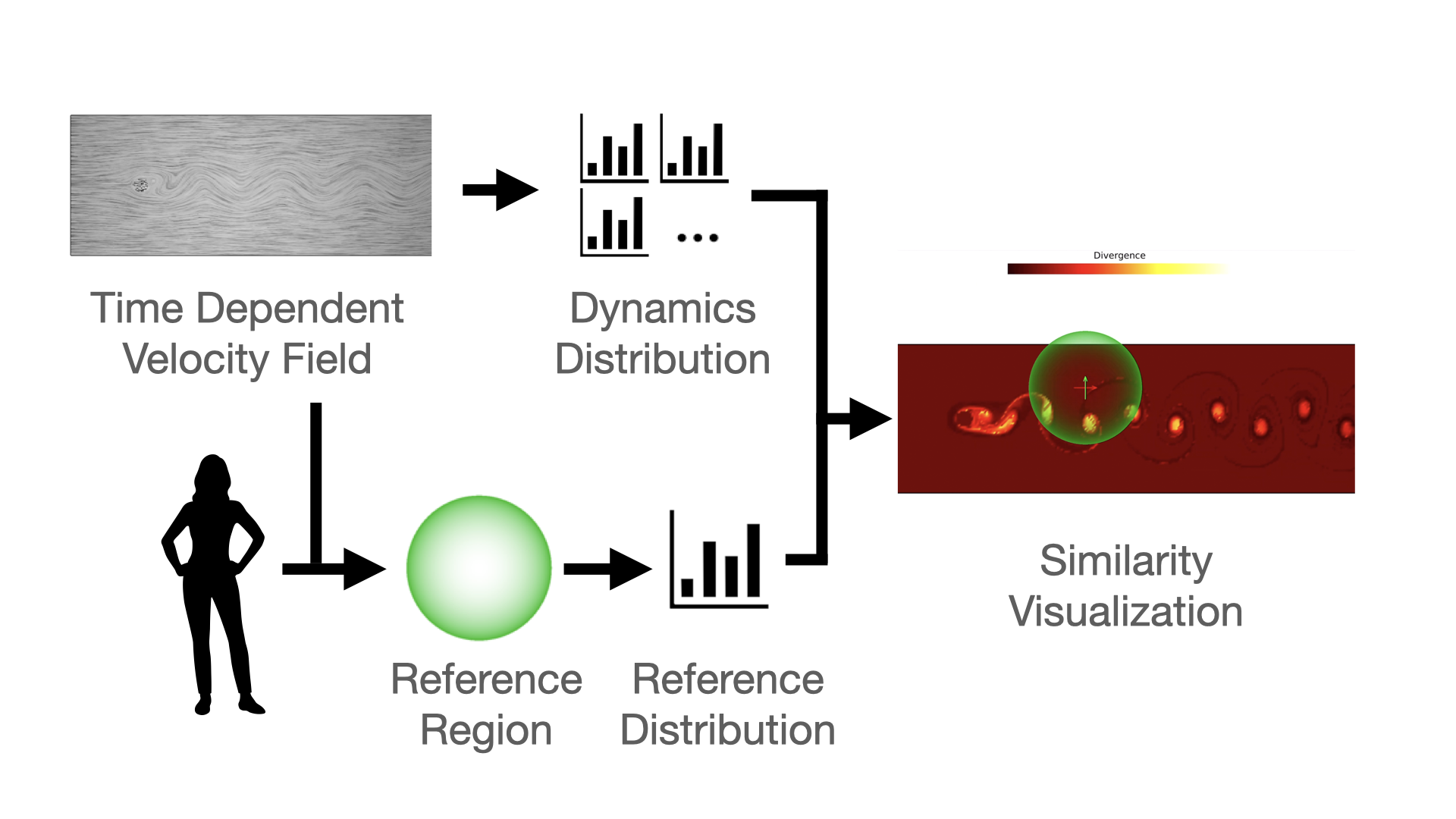Visualizing Similarity of Pathline Dynamics in 2D Flow Fields
Baldwin Nsonga, Gerik Scheuermann
Room: 104
2023-10-25T03:36:00ZGMT-0600Change your timezone on the schedule page
2023-10-25T03:36:00Z

Fast forward
Full Video
Keywords
Human-centered computing—Visualization— Visualization application domains—Scientific visualization
Abstract
Even though the analysis of unsteady 2D flow fields is challenging, fluid mechanics experts generally have an intuition on where in the simulation domain specific features are expected. Using this intuition, showing similar regions enables the user to discover flow patterns within the simulation data. When focusing on similarity, a solid mathematical framework for a specific flow pattern is not required. We propose a technique that visualizes similar and dissimilar regions with respect to a region selected by the user. Using infinitesimal strain theory, we capture the strain and rotation progression and therefore the dynamics of fluid parcels along pathlines, which we encode as distributions. We then apply the Jensen–Shannon divergence to compute the (dis)similarity between pathline dynamics originating in a user-defined flow region and the pathline dynamics of the flow field. We validate our method by applying it to two simulation datasets of two-dimensional unsteady flows. Our results show that our approach is suitable for analyzing the similarity of time-dependent flow fields.